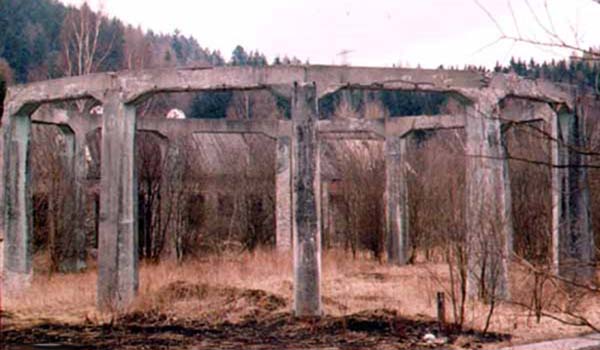The Nazi Bell - Die Glocke

Die Glocke (German for "The Bell") was a purported top secret Nazi scientific technological device, secret weapon, or Wunderwaffe. First described by Polish journalist Igor Witkowski, it was later popularized by military journalist and author Nick Cook as well as by writers such as Joseph P. Farrell. Farrell and others[who?] associates it with Nazi occultism and antigravity or free energy research.
According to Patrick Kiger writing in National Geographic, Die Glocke has become a "popular subject of speculation" and a following similar to science fiction fandom exists around it and other alleged Nazi Ňmiracle weaponsÓ of Wunderwaffen. Mainstream reviewers such as former aerospace scientist David Myhra express skepticism that such a device ever actually existed.
History
Arguments about the existence of Die Glocke originated in the works of Igor Witkowski. His 2000 Polish language book Prawda O Wunderwaffe (The Truth About The Wonder Weapon, reprinted in German as Die Wahrheit uber die Wunderwaffe), refers to it as "The Nazi-Bell".
Witkowski wrote that he first discovered the existence of Die Glocke by reading transcripts from an interrogation of former Nazi SS Officer Jakob Sporrenberg. According to Witkowski, he was shown the allegedly classified transcripts in August 1997 by an unnamed Polish intelligence contact who said had access to Polish government documents regarding Nazi secret weapons. Witkowski maintains that he was only allowed to transcribe the documents and was not allowed to make any copies. Although no evidence of the veracity of Witkowski's statements have been produced, they reached a wider audience when they were retold by British author Nick Cook, who added his own views to Witkowski's statements in The Hunt for Zero Point.
Description
Allegedly an experiment carried out by Third Reich scientists working for the SS in a German facility known as Der Riese ("The Giant")near the Wenceslaus mine and close to the Czech border, Die Glocke is described as being a device "made out of a hard, heavy metal" approximately 9 feet wide and 12 to 15 feet high having a shape similar to that of a large bell.
According to Cook, this device ostensibly contained two counter-rotating cylinders which would be "filled with a mercury-like substance, violet in color. This metallic liquid was code-named "Xerum 525" and was otherwise cautiously "stored in a tall thin thermos flask a meter high encased in lead".
Additional substances said to be employed in the experiments, referred to as Leichtmetall (light metal), "included thorium and beryllium peroxides". Cook describes Die Glocke as emitting strong radiation when activated, an effect that supposedly led to the death of several unnamed scientists and various plant and animal test subjects. Based upon certain external indications, Witkowski states that the ruins of a metal framework in the vicinity of the Wenceslas mine (aesthetically dubbed "The Henge") may have once served as test rig for an experiment in "anti-gravity propulsion" generated with Die Glocke; others, however, dismiss the derelict structure as simply being a conventional industrial cooling tower.
Supposed whereabouts
Witkowski's statements along with Cook's views prompted further conjecture about the device from various American authors, including Joseph P. Farrell, Jim Marrs, and Henry Stevens. Farrell says that the device was considered so important to the Nazis that they killed 60 scientists that worked on the project and buried them in a mass grave.
In his book, Hitler's Suppressed and Still-Secret Weapons, Science and Technology (2007), Stevens states that Die Glocke contained red mercury and describes stories alleging that a concave mirror on top of the device provided the ability to see "images from the past" during its operation.
Witkowski stated that Die Glocke ended up in a "Nazi-friendly South American country". Cook, on the other hand, states that it was moved to the United States as part of a deal made with SS General Hans Kammler. Farrell stated that it was recovered as part of the Kecksburg UFO incident. This last theory was dramatized in 2009 by The Discovery Channel and again in 2011 by The History Channel's Ancient Aliens series.